 Recently, I had the pleasure of attending this year’s annual conference of the Massachusetts Library Association as a panelist for its Genealogy 101 discussion session. The goal of the session is to inform public librarians about how the staffs of genealogically-oriented libraries and organizations work with patrons to answer their reference questions. Assisting patrons with genealogical questions is increasingly frequent for public librarians, given the popularity of prime time shows such as Who Do You Think You Are? and Finding Your Roots. My fellow panelists were Joy Hennig, Worcester Public Library; Susan Aprill, Kingston Public Library; Barbara Burg, Jewish Genealogical Society of Greater Boston; and Marie Lamoureaux, American Antiquarian Society in Worcester. Continue reading Genealogy 101: the librarians’ view
Recently, I had the pleasure of attending this year’s annual conference of the Massachusetts Library Association as a panelist for its Genealogy 101 discussion session. The goal of the session is to inform public librarians about how the staffs of genealogically-oriented libraries and organizations work with patrons to answer their reference questions. Assisting patrons with genealogical questions is increasingly frequent for public librarians, given the popularity of prime time shows such as Who Do You Think You Are? and Finding Your Roots. My fellow panelists were Joy Hennig, Worcester Public Library; Susan Aprill, Kingston Public Library; Barbara Burg, Jewish Genealogical Society of Greater Boston; and Marie Lamoureaux, American Antiquarian Society in Worcester. Continue reading Genealogy 101: the librarians’ view
Category Archives: Collections
The centennial of the loss of the Lusitania
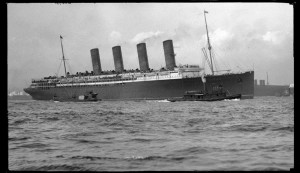
A century ago today, on 7 May 1915, the Cunard liner R.M.S. Lusitania was reaching the end of her latest transatlantic voyage. The Lusitania left New York on 1 May with 1,266 passengers and 696 crew on board, bound for Liverpool in England. While steaming eleven miles off the Old Head of Kinsale in Ireland, the vessel crossed the path of German U-boat U-20. The launch of a single torpedo into the hull of the Lusitania claimed the lives of 1,198 passengers and crew, leaving 761 survivors of an incident that lasted only eighteen minutes. Even though American lives were lost, it would be nearly two years before America entered the First World War in April 1917. Continue reading The centennial of the loss of the Lusitania
Mrs. Gray at the theater
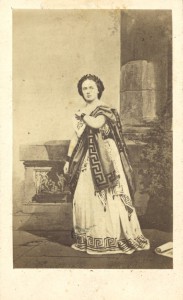
Boston hosted most of the celebrated performers of the day, and Mrs. Gray saw many of them – and recorded her views, whether laudatory or critical. Within days of commencing her diary, in January 1860, she went to hear Frances Anne Kemble[1] declaim Much Ado About Nothing[2] and “felt the better for laughing heartily over her admirable rendering.”[3]
Saturday, 14 January 1860: Went on Tuesday to the Opera: Saffo.[4] [Marietta] Gazzaniga[5] was magnifique in it – [she] does act splendidly, and her deep tones expressing deep emotion are unsurpassed – some exquise music in it, too. Continue reading Mrs. Gray at the theater
8 More Vital Record Alternatives
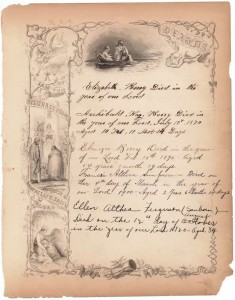
Yesterday I wrote about substitute records that can be used to locate elusive modern vital records. These alternative records can be especially beneficial when an index to the civil vital records is unavailable. Using these alternatives, you can then contact the appropriate authority to provide a copy of the original vital record.
However, what do you do when a vital record simply does not exist? It’s a common problem, especially when documenting older generations, as each state legislated its own vital record compliance. Luckily you can consult several vital record alternatives that can be used to prove birth, marriage, or death. (Most will be accepted as proof by a lineage society.) Here are a few examples: Continue reading 8 More Vital Record Alternatives
7 Vital Record Alternatives
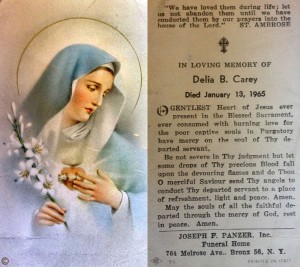
A great way to begin tracing your family history is to interview living relatives, asking for relevant birth, marriage, and death information. These interviews sometimes yield specific information (or at least an estimate), and you can then contact the appropriate authority to provide a copy of the original vital record.
But what do we do if grandma’s information fails to lead us to a vital record? Surprisingly, this is more common than you’d think, as people often misremember facts or were told the wrong information from the get-go. In this case, grandma may lead us on a wild goose chase trying to track down the correct location and/or date of a vital record. This may be especially annoying if the record is more recent, as statewide indexes for modern vital records are less common. To locate these modern vital records (civil records), we must first look for an alternative record to point us in the right direction. Here are some examples: Continue reading 7 Vital Record Alternatives
Finding Revolutionary War Ancestors
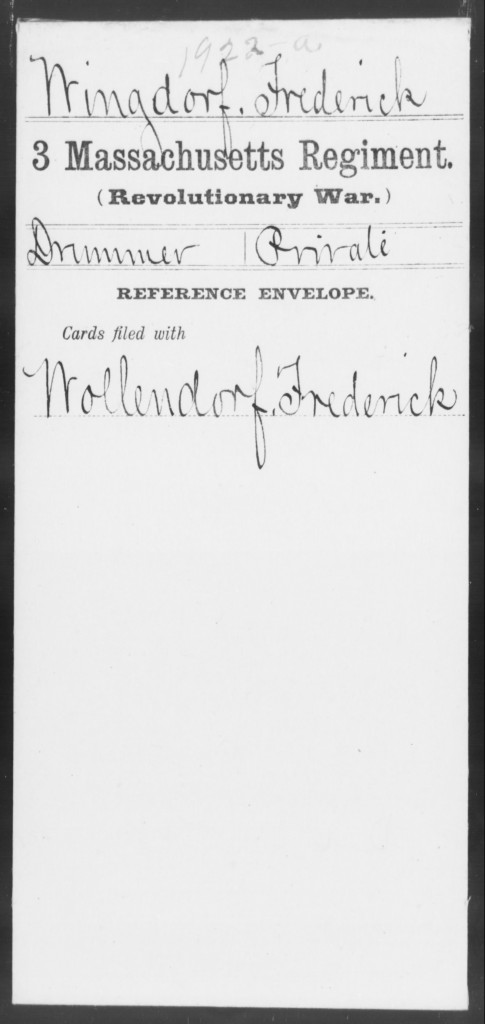
Patriots’ Day—the anniversary of the Battles of Lexington and Concord—is fast approaching here in Massachusetts. This particular holiday makes many of us a little reflective. Was my ancestor involved in the American Revolution? If you have ever been curious about that, here are some great resources to jump-start your research.
One of the best places to start looking is Virgil D. White’s Index to Revolutionary War Service Records. Available in the NEHGS research library, this particular series is a transcription of the General Index to Compiled Military Service Records of Revolutionary War Soldiers, Sailors, and Members of Army Staff Departments, also known as M860, housed at the National Archives in Washington, D.C. White’s transcription lists the rank, regiment, or company of each soldier, and is a fantastic resource because it includes every state of service. Consider yourself lucky if your ancestor had a rare name, such as Frederick Wingdorf. Frederick was a drummer in the 3rd Massachusetts Regiment, and—not surprisingly—was the only Frederick Wingdorf in the index. If you are not so lucky and your ancestors had very common names like Samuel Jones or William Moore or, worse, John Smith, you might need to consult secondary sources to help whittle down the long list of candidates. Continue reading Finding Revolutionary War Ancestors
Crossing Paths: Two Stories of Buchenwald
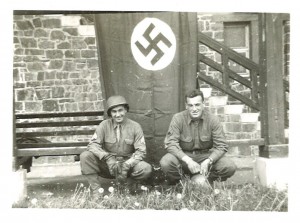
April 11, 2015 is the 70th anniversary of the liberation of Buchenwald concentration camp. In commemoration of this day, the American Jewish Historical Society–New England Archives (AJHS–NEA) is honoring the memory of two men who were present at Buchenwald for the liberation, and whose papers are in our archives.[1]
As an archive with a very specific mission (to collect and preserve the records of the Jewish communities of Greater Boston and New England), AJHS–NEA has many collections that are connected by family relationships. Continue reading Crossing Paths: Two Stories of Buchenwald
Beacon Hill Place
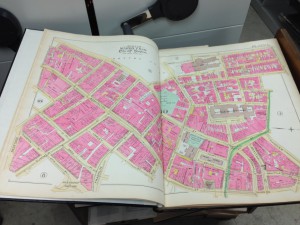
Mrs. Gray’s Boston, at least during the 1860s, was one largely arrayed around the Common. Her friends lived in houses stretching from Beacon Hill (Beacon, Bowdoin, Chestnut, Hancock, and Mount Vernon Streets) down Park Street to a long line of houses, all long-since demolished, on Tremont Street, thence along Boylston Street to the new Back Bay, with a focus on Arlington Street and Commonwealth Avenue, not to mention (again) Beacon Street. Her sewing circle sometimes met in Chester Square, in the South End, but Mrs. Gray was apt to leapfrog the Back Bay development to her numerous friends living in Roxbury, or perhaps in the country in Dorchester and Brookline. Continue reading Beacon Hill Place
Becoming American: A Look at the Process
The National Archives’ Records of the Immigration and Naturalization Service—which many genealogists informally call “Record Group 85”—is one of the best sources of data on immigrants to America, covering the years 1787 to 1993. It’s a common misperception that Record Group 85 contains only passenger lists, which are now viewable online through many sites. However, this record group contains hundreds of case files of immigrants either trying to come into the United States or trying to stay in the country. Also hiding in this series are documents that introduce us to what immigrants were expected to learn about their adopted country in different periods. Continue reading Becoming American: A Look at the Process
Women in the Gray diary: Part Two
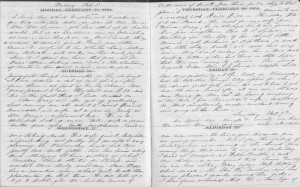
Regina Shober Gray kept a diary for 25 years. Taking a smaller portion of the diary – the period between 1861 and 1870 – and with a focus (for Women’s History Month in March) on some of the women the diarist mentions, I have assembled a few representative entries from those years. (See last week’s post for the 1861–1865 entries.)
Mrs. Gray’s reflections range over marriage for money and position (March 1861), the servant question (June 1862 and October 1867), women in the public sphere (March 1863), her own emotional state (April 1865), a chastening romantic episode (February 1866), the coarsening effects of modern life (February 1868), and a modest attempt to aid poor but proud working women in Boston (January 1870):[1] Continue reading Women in the Gray diary: Part Two